Lecture
In England, the forerunners of the first newspapers were called news. These were handwritten newsletters. The print media were called ballads of the news and the first print newspaper appeared - British Mercury.
Journalism in England began with William Kexton. In the 60s of the 15th century he studied printing craft in Cologne, acquired a printing press there. In 1476 he organized the Wenstminster Printing House in England. He prints books (Cesssera's Canterbury Tales. The first English book with illustrations is The Mirror of the World).
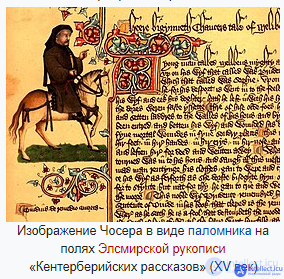
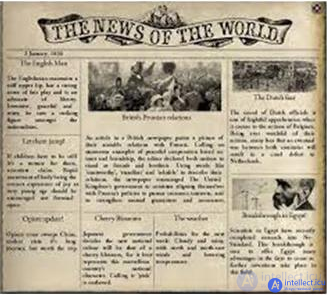
At the beginning of the 17th century, periodicals appeared in England. “Weekly News From ...” was published in London by Born Born and Artyom. In the 20-30 years of the 17th century - the active development of print publishing. The state puts book printing and journalism under strict control and turns this business into a state monopoly. The license to publish could only be obtained from the hands of the monarch.
The newspaper also resembles a book. They were often called "news books." The format is small, 6-25 pages. in 40 years the frequency of English mercury is stabilized. Famous publisher 17v. Needham in the years 1643-1646 issues a weekly British newsletter. In 1650-1660 he is also a political messenger. An advertisement appears in it (e.g. tea). Mercury can also be classified as a weekly journal.
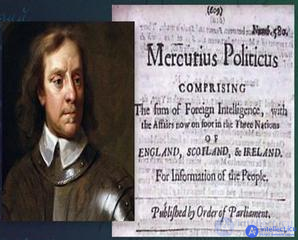
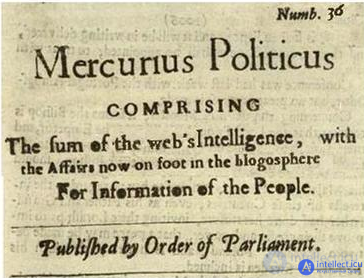
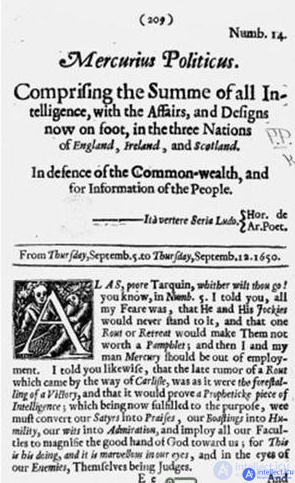
It is published on behalf of General Ferfax and the publication of Mobbot Moderate. In the mid 70's beginning. Oxford Newspaper. It turns out 2 p a week and in appearance it is a real newspaper. A column system first appeared in it. Later it was renamed the London newspaper, because The printing house has moved. Translated into French. language and had an international version. She had information. character and dry tongue.
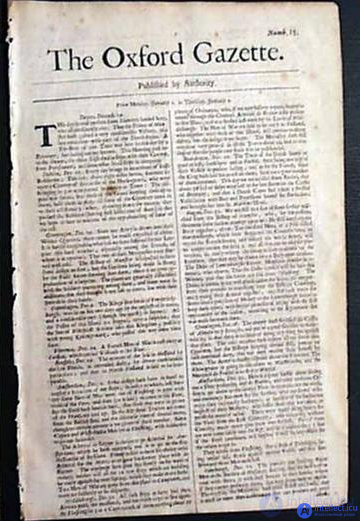
In the mid-60s (1665), the Oxford Gazette began to appear. She appeared 2 times a week and in appearance she was already a real newspaper. This is where the speaker system first appears.
A little later, the Oxford Gazette was renamed the London newspaper.
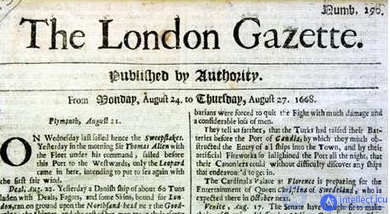
The first daily newspaper, The Daily Courant, was published in London in 1702.
The 17th century was for England the century of the Bourgeois revolution. Here, there was a tradition of conducting political discussions not in newspapers, but in pamphlets. Pamphlet journalism of this time became one of the most important factors that shaped English journalism. At 17 in England, journalism went a long way from primitive newsletters to a modern mechanism for collecting and distributing information.
The first daily newspaper, Courant, 1702, London
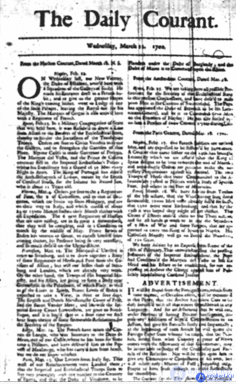
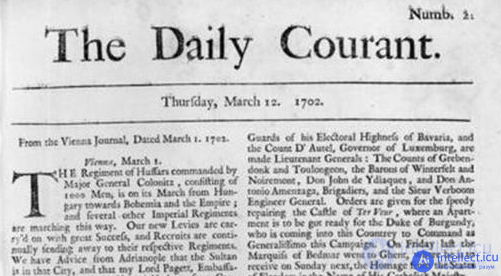
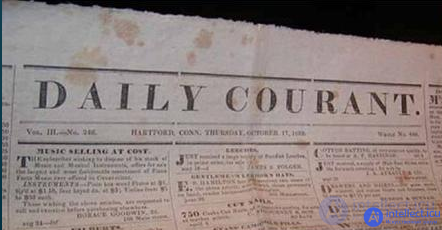
Daily Courant - was the first regular daily newspaper, published in England since the beginning of the 18th century. It was first published on March 11, 1702 by Elizabeth Mallet, who had an office on the second floor above the White Hart Fleet Street Pub in London. The newspaper came out in 1735 when it was merged with the Daily Gazetteer.
The newspaper consisted of one page with two columns of text. Mallet advertised that she intended to publish only foreign news and would not want to add any comments on her own life if other people have “enough knowledge to tell about themselves” [2].
Mallet soon sold the newspaper to Samuel Buckley, who moved it to Little Britain, known as the “Dolphin Sign”. Buckley later began to print The Spectator.
Despite claims by some English historians that the Daily Courant was the first newspaper ever published, the German newspaper Relation aller Fürnemmen und gedenckwürdigen Historien, published from 1605 by Johann Karl in Strasbourg, is most often recognized as the first newspaper.
Other newspapers older than the Daily Courant were the first newspapers of modern Germany, Avisa, published 1609 in Wolfenbüttel or the Dutch Courante uyt Italien, Duytslandt, & c. 1618.
The Norwich Post is also believed to have been published earlier, - 1701
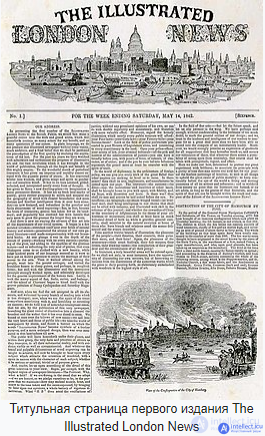
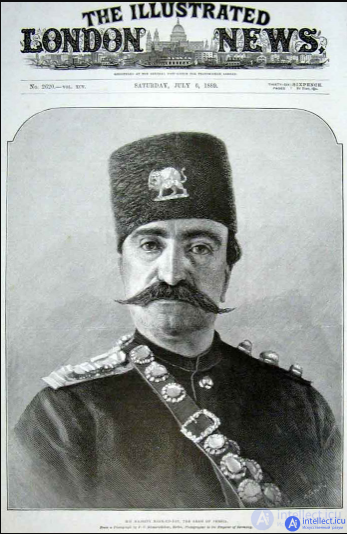
Nasruddin Shah Kajar on the cover page of "The Illustrated London News" in
his last visit to Britain 1889
The Illustrated London News is the world's first illustrated weekly newspaper (later a magazine). It was published in London from 1842 to 2003. The most popular newspaper of Victorian England, in the XX century lost its meaning.
The functions of censorship in England were assigned to the so-called Star Chamber under the Privy Council of the King, who played in the XVI-XVII centuries. role of the press committee. The rights of the main censors in the Star Chamber were given to the archbishops of London and Canterbury, without the sanction of which not a single printed text could be published.
Star Chamber (Eng. Star Chamber, Lat. Camera stellata) - existed in the years 1487-1641, an extraordinary court under the king of England. Created by Henry VII for trials of nobles after the Scarlet and White Rose Wars.
Initially, the Star Chamber was an appellate court designed to minimize the influence of aristocrats on justice and to protect the rights of commoners, but during the reign of Henry VIII it became an instrument for closed reprisals against the king’s real and imaginary opponents and in many cases acted as the sole court. The Star Chamber court was canceled during the English Revolution by an act of parliament that affirmed the principle of habeas corpus (not to be confused with the more famous habeas corpus act of 1679).
Name of unclear origin; the most frequent explanation, first recorded a century after the creation of the court, was due to the fact that the ceiling of the courtroom (already mentioned in the XIV century) was decorated with gilded stars, but there are other etymologies of the name (also written as Sterred chambre and Sterne-chamere) .
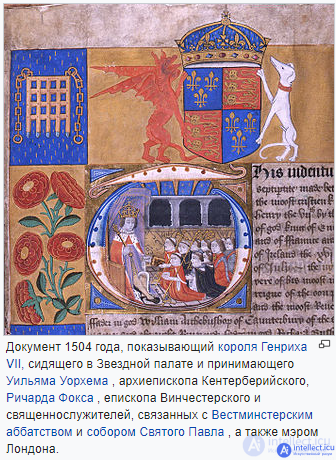
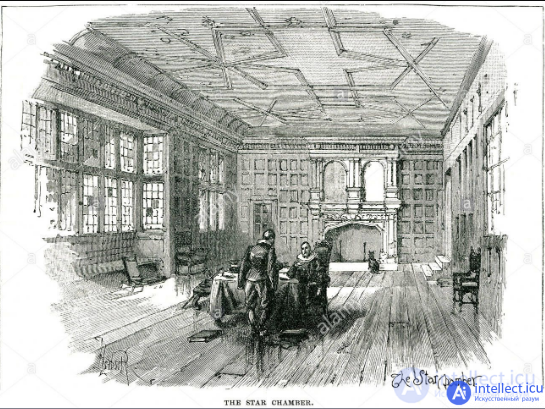
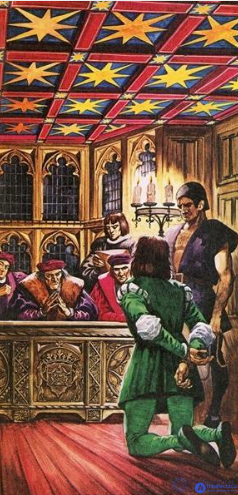
Comments
To leave a comment
Journalism History
Terms: Journalism History